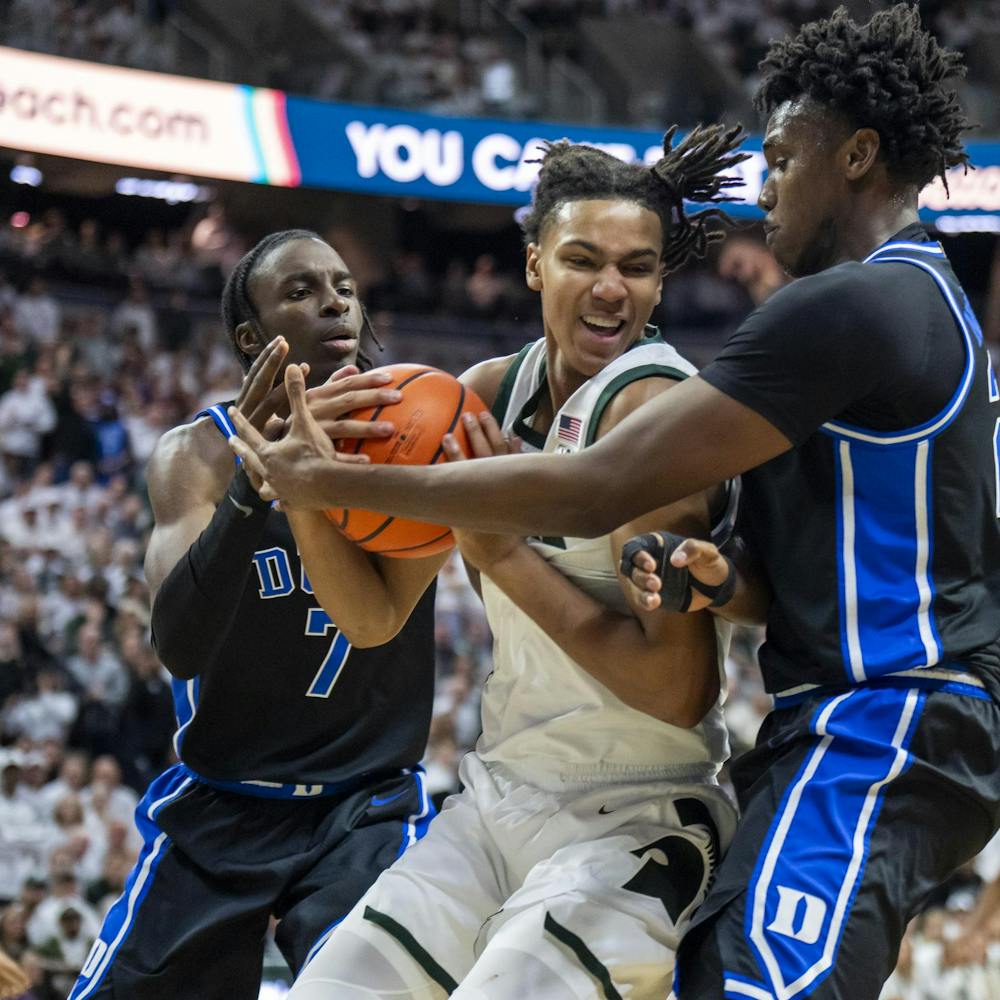Welcome back to "Rock Your Body," The State News fitness and nutrition column. Each week, we hit up our local experts with some questions and pass on their wisdom to you.
But before we get to the goods, we thought we'd tell you a little bit about who'll be giving you advice.
Tom Ostrander: Tom is the owner of Powerhouse Gym, 435 E. Grand River Ave. He is one of Michigan's top amateur bodybuilding competitors. Tom is a personal trainer with experience ranging from professional athletes to stay-at-home moms.
Jim Pivarnik: Jim is a professor of kinesiology and epidemiology. Trained as an exercise physiologist, his specialty is in physical activity and exercise on chronic disease risk. He is also director of MSU's Center for Physical Activity and Health.
Ronda Bokram: Ronda is a nutritionist in the health education department at Olin Health Center.
This week, we asked:
SN: What are the important things you look for when reading a food label? Do some things get over-emphasized?
Tom: When reading a food label, it is important to be aware of why you are eating the food in the first place. For example, if you are on a low-carbohydrate diet, you must obviously be aware of the carbohydrate count on the label - you wouldn't go suck down a bag of Skittles.
The main things I look for depend on what my activity level is at that moment. If it is my pre-workout meal, I choose something that is balanced with good, slow-burning carbohydrates - such as oatmeal, rice, or potatoes -to carry me through my workout session. If it is at night, and I've completed all my activities for the day, I'll choose something with high protein, minimal fat and carbs.
When reading a label, it is important to read between the lines. Say something has 10 grams of fat; if 8 grams are from saturated sources, then you know you should probably avoid it. It's the same with carbs - you must realize how much is coming from sugar, fiber, and complex sources.
Ronda: Labels are supposed to be helpful in making choices about eating. However, it appears that most individuals use labels to eliminate foods by noting numbers: Number of carbohydrates, fats, or overall calories.
In reality, food labels should be used to help balance energy intake, and learn how to incorporate all foods into an eating program. Unless you just eat that one food all the time, any given label represents just one food item in an entire day.
For example, salad dressing might have 5-10 grams of fat in a serving. Instead of reaching for the fat free alternative, remember that this is 5-10 grams out of the 50-60 grams-a-day that is considered healthy to consume. And, even better, salad dressings are liquid oils, the kind of fat you should be eating.
Remember, too, that the serving size on the label is only so they can list nutrients per a certain amount. It doesn't define what you need to consume that is a portion. The amount that meets your needs is often much more than the amount on the label. So, bottom line: Food labels have their place, but only as a part of an overall nutrition plan.
SN: How does sleep affect your exercise routine? How much do you need?
Tom: As far as sleep goes, it depends on the individual. Some people can't exercise at night because it will keep them awake - others suffer no such effect. Some people require only five-six hours of good sleep, some need eight-nine hours.
Getting too much sleep will also make you feel as groggy as not getting enough. So what is the correct amount? Who knows for certain, but what we do know is that if you listen to your body it will tell you exactly how much sleep you require.
Pay attention to what your body is telling you and make sure to give it the rest, recuperation, and nutrients it needs. Once you are really in tune to what your body is telling you on a daily basis, that's when you will truly see the most satisfying results of health and fitness.
Jim: How much sleep someone needs is difficult to answer. The range is likely five-nine hours, and is highly individual. Experts usually agree that, regardless of the amount of sleep, the sleep/wake pattern should be as regular as possible.
As any college student knows, some people are larks (go to bed early, wake up early), and others are owls (stay up late, sleep in). By college age, one usually figures out which category they fit into, and should try, if possible, to fit a sleeping pattern around this characteristic.
Whatever your normal routine, sleep patterns should be monitored carefully when increasing an exercise training program. Specifically, when an athlete begins to over- train, sleep patterns suffer, and what sleep is obtained is often sporadic and restless. Studies have shown that, during a tapering period that precedes a big event, sleep patterns tend to normalize, and the quality and quantity of sleep improves.
When I was in graduate school, I had the opportunity to participate in a study of sleep deprivation and aerobic exercise performance. After staying awake for approximately 30 hours, we were surprised to find that our aerobic performance did not suffer. However, the results of this study should not cause one to skip sleep intentionally. I only mention it to show that even if you stay up most of the night worried about your athletic event the following day, the result will not likely be disastrous.
On the flip side, one could also ask the question, does exercise help promote sleep? The research on this topic is mixed, but many physicians prescribe exercise for their insomniac patients. When the exercise is mixed in with an overall treatment plan designed to reduce stress and anxiety, it seems to work.
If you would like to have your questions answered, please e-mail them to msandu@statenews.com.






